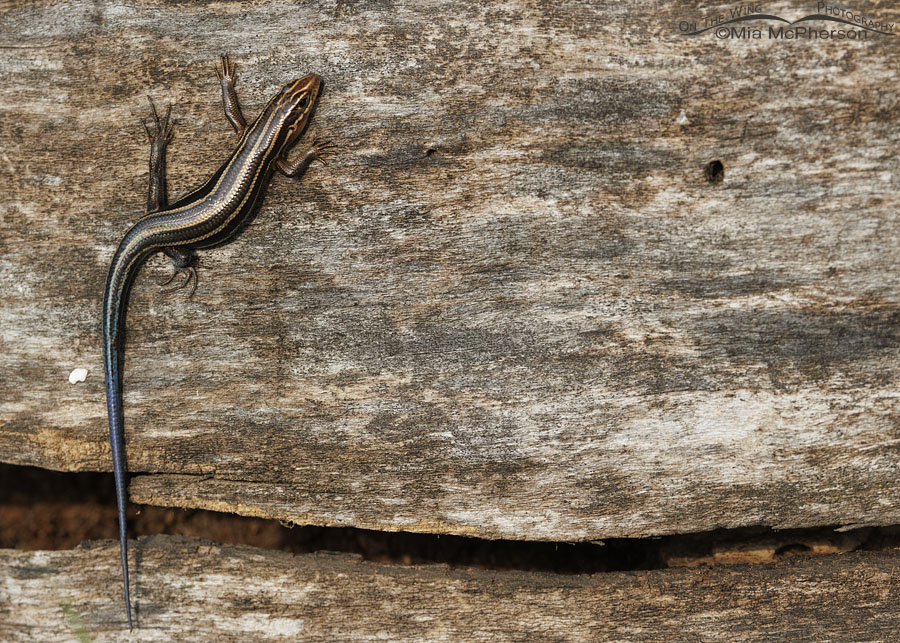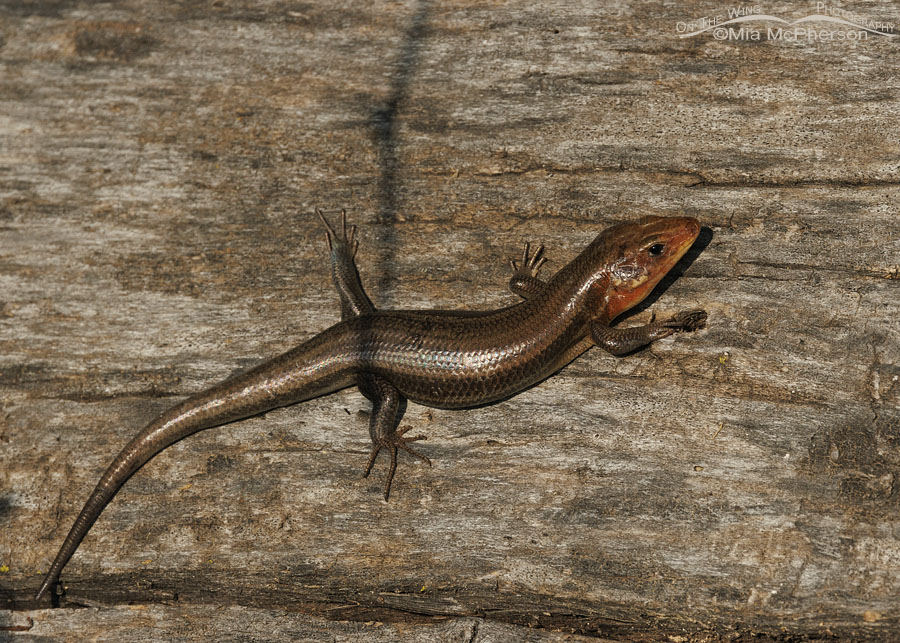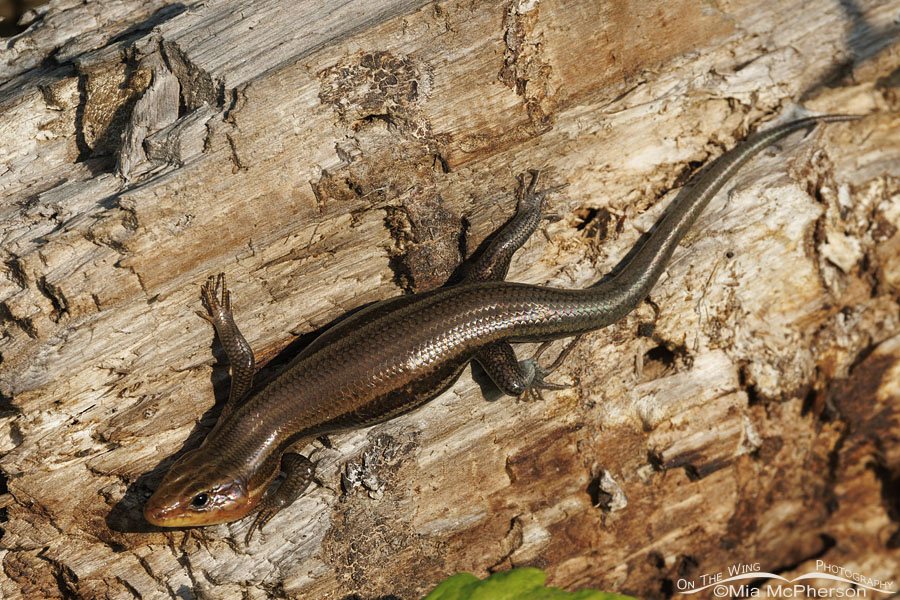Today, I am sharing three Common Five-lined Skink photos that I took at Sequoyah National Wildlife Refuge in Oklahoma when I visited my friend Steve Creek.
 Female Common Five-lined Skink on a log – Canon R7, f6.3, 1/800, ISO 500, Canon RF 100-500mm at 324m, natural light
Female Common Five-lined Skink on a log – Canon R7, f6.3, 1/800, ISO 500, Canon RF 100-500mm at 324m, natural light
I have seen many of these skinks when I lived back east, so it was fun to see them once again. I was delighted to have them in my viewfinder. I saw a few when I was clearing out my mother’s apartment on her front stoop, but I didn’t have the camera gear to photograph those skinks.
Thanks to Steve, who loaned me some of his Canon camera gear, I was able to take these images when he took me to the refuge.
The female in the photo above still shows some of the cobalt blue on her tail that young Common Five-lined Skinks are known for.
 Adult male Common Five-lined Skink at Sequoyah NWR – Canon R7, f8, 1/1000, ISO 400, -0.3 EV, Canon RF 100-500mm at 500m, natural light
Adult male Common Five-lined Skink at Sequoyah NWR – Canon R7, f8, 1/1000, ISO 400, -0.3 EV, Canon RF 100-500mm at 500m, natural light
The most likely spots to see Common Five-lined Skinks at the refuge were where trees had fallen close to the road. The skinks liked to sun themselves on the slowly decomposing logs. On the logs, there were beetles, flies, and other insects which the skinks could feed on if they caught them.
Common Five-lined Skinks possess interesting adaptations. When threatened or handled, they can shed their tail as a defense mechanism, which may continue to wriggle and distract predators while the skink escapes. Over time, the tail regenerates and is often shorter than the original.
 Common Five-lined Skink male at Sequoyah NWR – Canon R7, f8, 1/800, ISO 320, Canon RF 100-500mm at 500m, natural light
Common Five-lined Skink male at Sequoyah NWR – Canon R7, f8, 1/800, ISO 320, Canon RF 100-500mm at 500m, natural light
Observing Common Five-lined Skinks in their natural habitat provides a glimpse into the fascinating world of these small reptiles. Their unique patterns, adaptable behaviors, and reproductive strategies make them a captivating species to study, photograph, and appreciate. I know that I had fun observing and photographing them at the refuge!
Life is good.
Mia
Click here to see my reptile and amphibian gallery. I will be adding more images of this species as time allows.


Fascinating pics and narrative. I don’t think I’ve ever seen a skink before. Thanks Mia.
I get to learn something everyday. Thanks for the reptile lesson
I do like skinks – and we have them in the garden. They are a sure sign that summer is here.
Neat photos. I don’t know much about them and have only seen them on Washington and Oregon along the coasts.